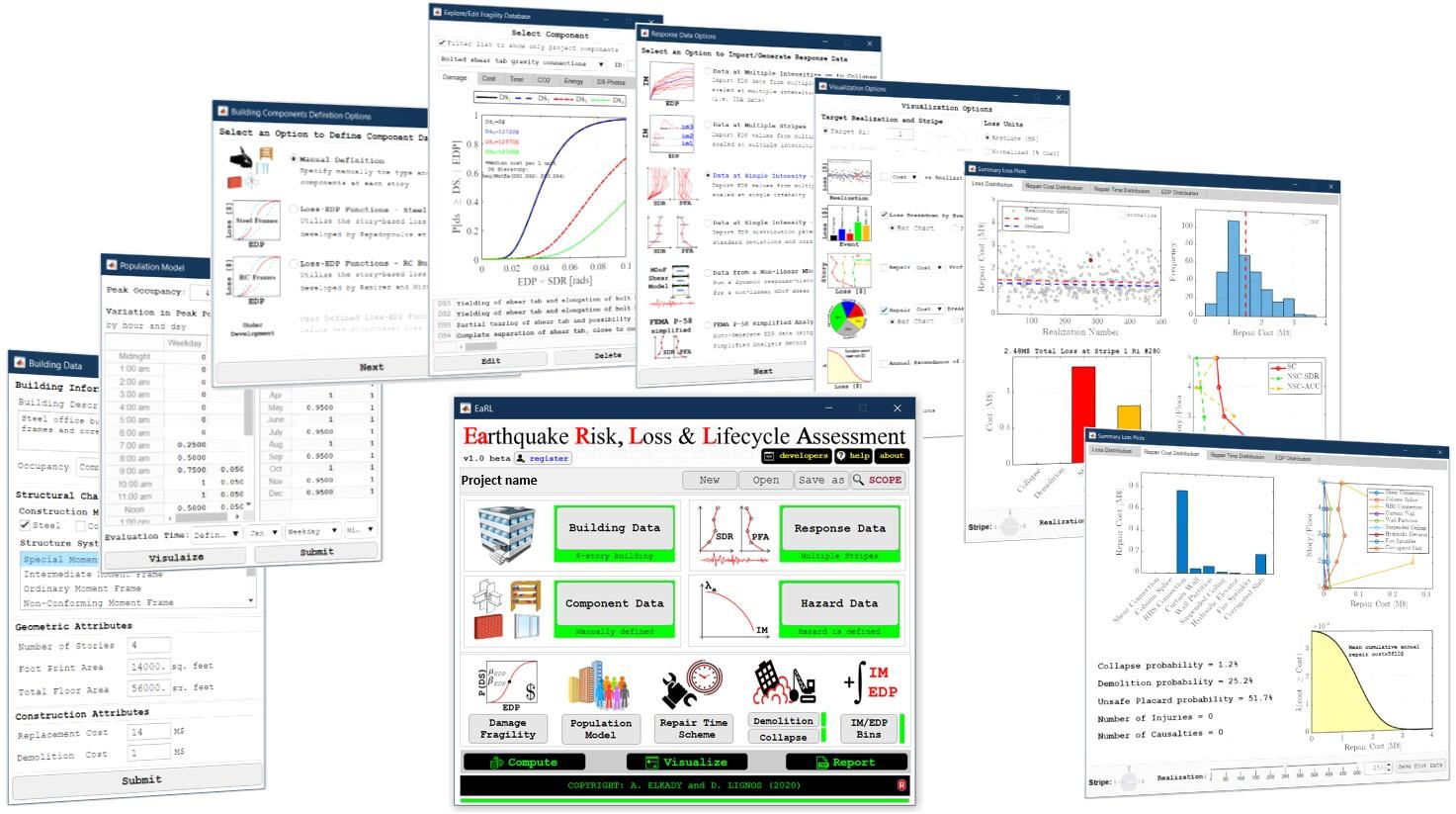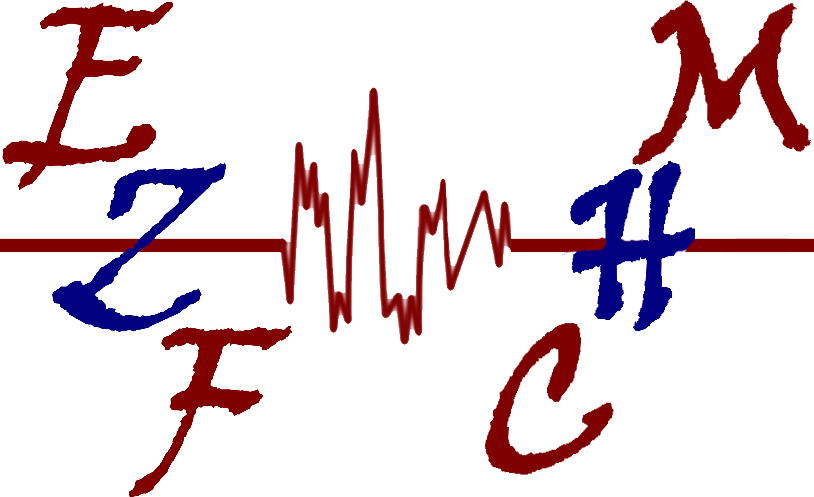EZ-FRISK™
Ez-Frisk is the most powerful software to access the seismicity parameters. This software is powered by Fugro company. We are working on the usage of this software and its training. EZ-FRISK™ is equipped with the following features:




General Features
1. Seismic hazard analysis, spectral matching, and site response analysis; an integrated package.
2. Extensive results are available in tabular and graphical formats.
3. Efficient, accurate numerical methods.
4. Convenient and quick specification of input.
5. Extensive help documentation in Html Help and Adobe PDF formats.
6. Easy-to-use interface for the novice or occasional users.
7. Powerful user interface capabilities for frequent users.
PSHA and DSHA
1. Calculates PSHA at any number of frequencies of ground motion and up to 50 amplitudes.
2. Deaggregation of PSHA by distance, magnitude, epsilon, and distance/magnitude.
3. DSHA calculations for up to 20 fractiles.
4. Effectively unlimited number of seismic sources. Sources can be selected by distance from the site, by region, or individually.
5. Plots of recurrence rate vs. magnitude for each seismic source.
6. Effectively unlimited number of ground motion equations.
7. Ability to use different ground motion equations for different seismic sources, with custom weights applied to any combination of seismic source and attenuation equation.
8. Uniform hazard spectra (UHS) can be generated for any return period without having to rerun the PSHA.
9. Results in tabular and graphical form.
10. Plots of probabilistic hazard for each spectral frequency, and UHS for up to 100 return periods. Plots of mean and fractile deterministic spectra.
11. Plots can be customized and saved as templates.
12. Batch processing capability for multiple assumptions and sites.
13. Multi-site gridded and/or selected sites) hazard mapping available (additional cost).
14. USGS faults, area seismic sources, and background seismicity data for all 50 states and Puerto Rico / Virgin Islands (for user’s licensing the US and Canada region) currently 1996, 2002, and 2008 models are available.
15. Geological Survey of Canada fault, background, and area seismic sources for Canada (for user’s licensing the US and Canada region).
16. Proprietary seismic source databases are available for Mexico, Central America, the Caribbean, South America, Europe, the Eastern Mediterranean, the Middle East, Australia, South Asia, South East Asia, Indonesia, Philippines, China, Japan, Siberia and Central Asia (additional cost).
17. Multiple magnitude recurrence models: exponential, characteristic, truncated normal and USGS.
18. Faults can be modeled with an unlimited number of weighted magnitude recurrence models.
19. Fault geometry is specified and analyzed in 3-D. Different dip angles can be used for the upper and lower portion of the fault, and blind faults can be specified.
20. Subduction interface zones can be modeled using an upper and lower trace specified in 3-D.
21. Subduction slab zones can be modeled using an upper and lower trace specified in 3-D.
22. Ground motion equations using 85 mathematical forms and 241 equations that span the Western US, the Central and Eastern US, Japan, Europe, the Middle East, Australia, New Zealand and other parts of the world.
23. Optional truncation of the residual distribution using 5 methods.
24. Ground motion equation driver to explore and test ground motion equations. Charts and tables can be created using any parameter as the independent variable (for example magnitude, distance, or spectral period). An unlimited number of levels for most other parameters for any number of ground motion equations.
25. All database types can be extended with user-defined data.
26. Analyses can be recalculated with updated seismic source and attenuation equation information without having to update the analysis definition.
27. Seismic hazard analysis can use spectral acceleration at 5% damping, maximum rotated component of spectral acceleration at 5% damping, peak ground velocity, peak ground displacement, Arias intensity, or MMI as the intensity measure for ground motion.
spectral Matching
1. Spectral Matching using Norm Abrahamson’s RSP Match 2009 algorithm.
2. Baseline correction using Norm Abrahamson’s BLine03 algorithm.
3. Matching to user-defined target spectrum.
4. Matching to uniform hazard spectrum from an EZ-FRISK™ seismic hazard analysis.
5. Scoring of accelerograms for suitability for matching based on magnitude, distance, duration, scaling required, and initial spectral response shape.
6. Access to PEER and USNRC strong-motion databases.
7. Automatically imports accelerogram in AT2 and SMC formats.
8. Import utility capable of importing a wide variety of accelerogram formats.
9. Dynamic spectral match and convergence plots.
10. Initial vs. matched time histories for acceleration, velocity, and displacement.
11. Export of matched accelerograms in AT2 format.
12. Export of matched accelerograms in a format suitable for site response analysis with Shake91.
13. Export of ground motion time histories using spectral velocities and displacements.
Site Response Analysis
1. Database of modulus reduction curves with over 30 published curves.
2. Database of damping curves with over 30 published curves.
3.Darendeli’s confining-pressure and plasticity index-dependent modulus reduction and damping curves.
4. Database of soils for creating and using organization-specific dynamic soil properties.
5. Site response analysis using Shake91 or Shake91+, an enhanced version with less restrictions on the number of accelerogram points, number of layers, and the number of dynamic soil properties.
6. Soil profiles with up to 99 layers.
7. An unlimited number of dynamic soil properties.
8. Tools for quickly creating and visualizing soil and soft rock columns.
9. Up to 30,000 points in accelerograms.
10. Automatically imports accelerogram in AT2 and SMC formats.
11. Import utility capable of importing a wide variety of accelerogram formats.
12. Can directly use EZ-FRISK™ spectrally matched accelerograms, or user imported accelerograms.
13. Automatic decimation of accelerograms as needed.
14. Automatic confining-pressure-dependent dynamic soil properties.
15. Depth charts for a wide variety of measures.
16. Time history plots for acceleration, velocity, displacement, shear stress, and shear strain for any layer or combination of layers.
17. The response, Fourier, and amplification spectra plots.
18. Exported accelerograms for any layer.
19. Export of ground motion time histories using spectral velocities and displacements.
